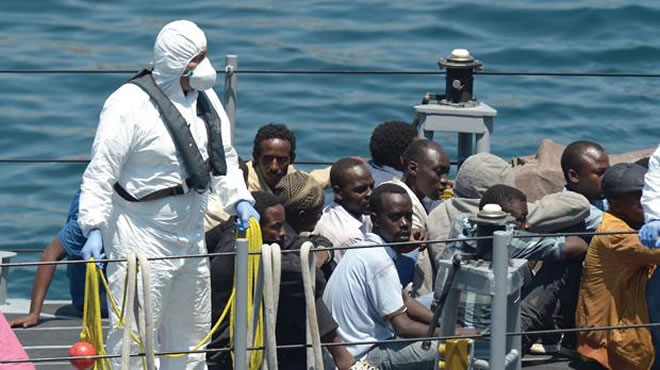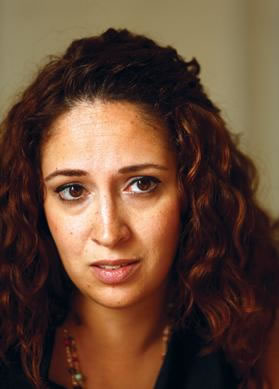
Monday, August 24, 2015

Asylum seekers are first asked questions aimed at verifying whether they are truly from the country and region they claim to hail from. Photo: Matthew Mirabelli
Assistant Refugee Commissioner Nathalie Massa Zerafa explains to Kim Dalli the rigorous procedure where genuine refugees who come to our country claiming asylum are sifted from economic migrants and others who do not qualify for protection
“The Universal Declaration of Human Rights states that everyone has the right to seek and to enjoy asylum from persecution in other countries,” Ms Massa Zerafa states from the outset.
“I think it’s very important to keep this right in mind.”
The Office of the Refugee Commissioner is obliged to assess whether a person claiming asylum deserves to be granted protection or not – a task which she describes as “extremely difficult”.
According to the law, a migrant has to tick a very specific set of criteria to be granted international or local protection (further outlined below).

Assistant Refugee Commissioner Nathalie Massa Zerafa. Photo: Darrin Zammit Lupi
|
“Not every asylum seeker is fleeing persecution. Some are economic migrants, in search of a better life.
“When a person tells us that the reason he is claiming asylum is that he was starving to death in his homeland that alone does not enable him to qualify for protection.”
The asylum landscape is a highly volatile one. In the past, the vast majority of asylum seekers in Malta came from Somalia, Eritrea, Sudan, Nigeria, Ivory Coast, Mali and Ghana.
But the picture has now changed completely, with the top three nationalities of asylum seekers being Libyans, Syrians and Ukrainians.
Every applicant has to undergo a credibility assessment, which culminates in a two-hour, one-to-one interview with the office’s case workers.
“This is very crucial to the asylum process. We first have to believe the applicant’s story before we can move to the second step of determining whether they qualify for protection or not.
“In fact, the majority of our rejections are due to a lack of credibility – basically, we do not believe their story, that they are telling us the truth. They do not substantiate their claims.”
Applicants are obliged to cooperate and to provide detailed information on why they are claiming asylum.
During the lengthy, recorded interview, asylum seekers are asked a multitude of detailed questions – each moulded to the person’s life situation and story – to determine whether they are telling the truth.
The first set of questions is aimed at verifying whether the applicant is truly from the country and region he claims to hail from.
For instance, if a migrant claims to be from the war-torn Mogadishu in Somalia, he is asked about his life – such as where he was born, the hospital in which he was born, where he attended school, the name of the road it is located in and who headed the school. Every response is then verified by the case workers.
They are also asked questions on the geography and politics of the region, flag and national anthem. “You must take into consideration the life situation of the applicant. For instance, an uneducated Somali woman who has spent her life drawing water from a well and rushing back home out of fear of being raped can’t be expected to give a detailed lowdown of the country’s political situation.
“But you would expect her to tell you from where she would pass to draw the water, the names of the surrounding villages, who controlled the region and how the day-to-day situation was.”
There existed the perception that Somalis were automatically refugees. Somalia is a very large country, Ms Massa Zerafa points out, with regions such as Somaliland, towards the north, being safe and free from strife.
Somali asylum seekers need to hail from the south or central Somalia to qualify for protection.
One of the biggest challenges faced by the office is a lack of interpreters to translate into English the scores of languages.
“There are no Maltese who can speak languages like Somali or Tigrinya. Generally, we are forced to rely on our own clients.
“For instance with West Africans, every tribe has its own language. Some, such as Nigerians, would speak English but others would only have lived in their own village and would only speak the language of their tribe, such as Bambara.”
The interviews are recorded and double-checked at random by different interpreters.
If doubt remains as to whether the person is telling the truth, the office turns to a technique known as language analysis.
The applicant is asked to have a 30-minute telephone conversation with a representative from a specialised foreign company, which then issues a report detailing the probability of the person coming from the region they are claiming to be from.
“We don’t try to entrap people but we expect that a person asking Malta for protection should provide detailed information about what happened to him.
“People say that Malta has a high recognition rate – but this is because the majority of applications come from people who genuinely hail from countries in very critical situations. They would come to serious harm if returned.”
Types of protection offered by the Maltese asylum procedure
There are three different protection statuses which can be granted by Maltese authorities. Refugee status and Subsidiary Protection are covered by EU law, while the third form, Temporary Humanitarian Protection, is a national status not covered by the said law.
The aim of this status is to reduce the existing protection gap for those asylum seekers who do not qualify for refugee status or subsidiary protection but nonetheless require some form of protection. These three forms of protection are further described below.
1. Refugee Status:
According to the UN refugee convention, a refugee is someone who is unable or unwilling to return to their country of origin owing to a well-founded fear of being persecuted for reasons of race, religion, nationality, membership of a particular social group, or political opinion.
When a person is recognised as a refugee, he/she is entitled to the right to remain in Malta for a prescribed period (subject to renewal), the right to a travel document, as well as access to employment, social welfare, accommodation, integration programmes, State education and training, and family reunification.
2. Subsidiary Protection:
People who do not qualify for refugee status but who would come to serious harm (suffer the death penalty, inhumane or degrading treatment or indiscriminate violence) if returned to their homeland may be granted subsidiary protection.
Beneficiaries of subsidiary protection are substantially entitled to the same benefits as refugees, although access to employment may be limited subject to labour market considerations. Access to social welfare and medical care is limited to core benefits.
3. Temporary Humanitarian Protection:
This is a local type of protection given for specific, humanitarian reasons, such as to minors. A migrant under 18 who does not qualify for international protection will be given local protection until he/she turns 18.
Other beneficiaries may include a married couple where the wife qualifies as a refugee but the husband does not, and is instead given this form or protection for family unity reasons.
Beneficiaries of this status are granted the same benefits as those of Subsidiary Protection.